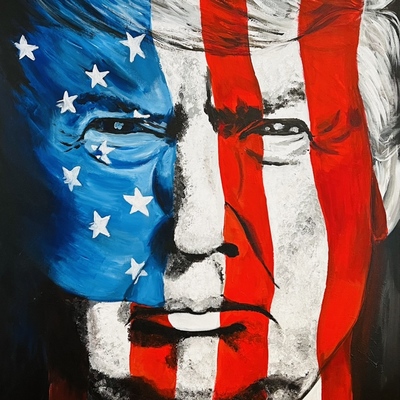Stay informed on the latest Truth Social posts from Donald Trump (@realDonaldTrump) without the doomscrolling. Consider it a public service for your mental health. (Why?)
- The U.S. has a significant and persistent trade deficit with Laos.
- This deficit is attributed to Laos's Tariff and Non-Tariff Policies and Trade Barriers.
- The U.S. will impose a 40% tariff on all Laotian products starting August 1, 2025.
- This tariff can be avoided if Laos-based companies manufacture products within the United States.
- Any retaliatory tariffs from Laos will result in additional tariffs from the U.S. added to the existing 40%.
- The trade deficit with Laos is a major threat to the U.S. Economy and National Security.
The imposition of a 40% tariff on all products from Laos, alongside a threat of further escalation for any retaliatory tariffs, signals a significant shift towards protectionist trade policies by the U.S. This directly impacts companies with supply chains in Laos or similar countries facing potential U.S. trade actions, potentially increasing input costs and reducing profitability. The rhetoric framing trade deficits as a 'National Security' threat indicates a willingness to use economic tools aggressively, which could lead to broader trade disputes globally, negatively affecting multinational corporate earnings, consumer spending due to higher prices, and overall economic growth projections.
The letter directly links trade deficits to 'National Security,' framing economic imbalance as a national threat. This rhetoric, coupled with the imposition of significant tariffs and a threat of further escalation for any retaliation, significantly raises economic tensions between the United States and Laos, and could impact regional trade dynamics. While not a military threat, the language could prompt diplomatic repercussions and potentially broader economic blocs.
- Commodities: Industrial commodities like Copper may decline due to concerns over global trade slowdown and reduced demand stemming from protectionist policies. Oil (WTI) could see reduced demand if global economic growth forecasts are cut. Gold (XAU) might rise as a safe-haven asset in response to increased trade uncertainty and geopolitical friction, especially given the 'National Security' reference. Short-Term Watchlist: XAU/USD price action, headlines on trade policy expansion, industrial metal prices. Medium-Term Focus: Global growth outlook, inflation trends stemming from tariffs, USD trajectory.
- Currencies (Forex): The US Dollar Index (DXY) could see a safe-haven bid due to global uncertainty, but persistent trade tensions might also weigh on U.S. growth prospects in the medium term. Currencies of trade-dependent economies, particularly those in Asia, might weaken against the USD. The Lao Kip would likely face significant depreciation pressure. Short-Term Watchlist: Fed speakers, Treasury yields, global risk sentiment. Medium-Term Focus: Central bank divergence (Fed vs other global central banks), global growth differentials, dollar liquidity cycles.
- Global Equities: Equity markets, including the S&P 500, Nasdaq, STOXX 600, Nikkei 225, and Hang Seng, are likely to react negatively to increased trade tensions. Sectors reliant on global supply chains, such as manufacturing and technology, could experience downward pressure. Companies with significant exposure to Asian markets or importing from them may face earnings revisions. Short-Term Watchlist: Futures open, VIX spike, FANG/semis/defense sectors. Medium-Term Focus: Earnings revisions, macro data (ISM, PMI), global capital flows, geopolitical overhangs.
- Fixed Income (Bonds): US 10Y and 2Y yields could decline as investors seek the safety of U.S. Treasuries amidst trade uncertainty. This could lead to a flattening of the yield curve. Credit spreads, particularly for companies exposed to international trade risks, may widen. Short-Term Watchlist: UST 10Y yield levels, TED spread, credit ETF flows (e.g., HYG). Medium-Term Focus: Fed dot plots, fiscal concerns related to trade impacts, economic surprise indices.
- Volatility / Derivatives: The VIX is likely to spike as trade policy uncertainty and potential for escalation increase market volatility. Options positioning reflecting increased uncertainty and hedging demand could amplify equity moves. Short-Term Watchlist: VIX levels vs VIX futures term structure, 0DTE flow, SKEW index. Medium-Term Focus: Volatility regime shifts, macro policy uncertainty, systemic tail risk (e.g., elections, trade wars).
- Crypto / Digital Assets: Bitcoin (BTC) may initially correlate with risk-off assets like gold if seen as a digital safe-haven, but could also decline alongside tech equities if the macro outlook deteriorates significantly due to trade wars. Liquidity concerns could also impact the broader crypto market. Short-Term Watchlist: BTC/USD, Coinbase order book activity, funding rates, ETH correlation. Medium-Term Focus: Regulatory news, stablecoin flows, macro liquidity backdrop.
- Cross-Asset Correlations and Systemic Risk: Increased trade tensions could lead to breakdowns in typical correlations, such as equities and bonds selling off simultaneously if inflation concerns from tariffs combine with growth concerns. Liquidity stress might emerge if global trade flows are significantly disrupted. Short-Term Watchlist: MOVE index, junk bond ETFs, gold/USD co-movement. Medium-Term Focus: Shadow banking risk, central bank intervention, market plumbing stress.
- Retail Sentiment / Market Psychology: Heightened trade tensions and economic uncertainty could lead to increased retail investor caution and reduced speculative activity. News of escalating trade conflicts may cause retail investors to pull back from riskier assets and focus on defensive strategies. Short-Term Watchlist: GME/AMC volume, Twitter/X trends, Reddit sentiment, TikTok mentions for market sentiment. Medium-Term Focus: Social media influence on market structure, potential for coordinated retail pushes, policy/regulatory crackdown on retail trading behavior.

